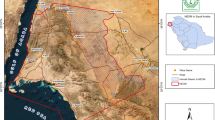Abstract
The essential purpose of the Convention Concerning the Protection of World Cultural and Natural Heritage is to protect the integrity of heritage values. Outstanding landscape is the core embodiment of the aesthetic value of a natural heritage site. This paper proposes a new assessment method from the point of view of the protection of heritage values. It is used to measure the degree of outstanding landscape integrity under the human and natural impact in natural heritage sites. This paper employ three indices, a visual index of outstanding landscape, a harmony index of the artificial landscape and a disturbance index of damaged landscape, to measure the impact of landscape integrity. The impact assessment model is based on a weighted combination of the three indices. The study site is the Fairy Valley, Kanas Nature Reserve, Xinjiang Uygur Autonomous Region in northwest China. The information employed is derived from field investigation and a Digital Elevation Model (DEM). A comprehensive evaluation of the Fairy valley was undertaken and it was determined that the outstanding landscape values are being compromised. Three protection methods are proposed to reduce the adverse effects and maintain landscape quality, thereby providing site managers with suggestions for the protection of natural heritage values. More broadly, the paper contributes novel methods of landscape assessment applicable to natural protected areas.
Similar content being viewed by others
References
Arrowsmith C, Inbakaran R (2002) Estimating environmental resiliency for the Grampians National Park, Victoria, Australia: a quantitative approach. Tourism Management 23:295–309.
Ayad YM (2005) Remote sensing and GIS in modeling visual landscape change: A case study of the northwestern arid coast of Egypt. Landscape and Urban Planning 73(4): 307–325.
Daniel TC, Boster RS (1976) Measuring landscape esthetics: The scenic beauty estimation method. Colorado: USA, Department of Agriculture, Forest Service, Rocky Mountain and Range Experiment Station pp 13–34.
Deng XZ, Jiang QN, Ge QS, et al. (2010) Impacts of the Wenchuan Earthquake on the Giant Panda Nature Reserves. Journal of Mountain Science 7:197–206.
Di F, Yang ZP, Liu XL, etal. (2010) Estimation on Scenic Beauty of Tourist Landscapes in Natural Heritage Spots: the Kanas National Nature Reserve, Xinjiang, China. Chinese Geographical Science 20(1): 59–65.
Fukamachi K, Oku H, Kumagai Y, Shimomura A (2000) Changes in landscape planning and land management in Arashiyama National Forest in Kyoto. Landscape and Urban Planning 52:73–87.
Eduardo GF, Bárbara AO, Martha BM, etal. (2007) Biodiversity conservation, traditional agriculture and ecotourism: Land cover/land use change projections for a natural protected area in the northeastern Yucatan Peninsula, Mexico. Landscape and Urban Planning 83:137–153.
Itami RM (1986) Scenic perception: Research and application in U.S. visual management systems. In: Phillip Dearden. Canadian Western Geographic Series, Forthcoming (1986). British Columbia: University of British Columbia.
Liu JG, Linderman M, Ouyang ZY, et al. (2001) Ecological degradation in protected areas: the case of Wolong Nature Reserve for Giant Pandas. Science 292:98–101.
Liu XL, Yang ZP, Di F, et al. (2009) Tourism ecological security evaluation in nature heritage area: The case of Kanas Nature Reserve. Chinese Geographical Science 19(3): 265–273.
Moss A, Brodie J, Furnas M (2005) Water quality guidelines for the Great Barrier Reef World Heritage Area: a basis for development and preliminary values. Marine Pollution Bulletin 51:76–88.
Qiu PF, Wu N, Luo P, et al. (2008) Analysis of Dynamics and Driving Factors of Wetland Landscape in Zoige, Eastern Qinghai-Tibetan Plateau. Journal of Mountain Science 6:42–55.
Rocchin D, Perry GLW, Salerno M, et al. (2006) Landscape change and the dynamic of open formations in a natural reserve. Landscape and Urban Planning 77:167–177.
Singh KN, Amit Kumar G, Lal B (2008) Species diversity and population status of threatened plants in different landscape elements of the Rohtang Pass, Western Himalaya. Journal of Mountain Science 5:73–83.
Tan JZ, Xiao QM, Yang HJ, et al. (2006) Studies on the effect of recreational activities on soil enzyme and microbial activities in Zhangjiajie National Forest Park. Journal of Natural Resources 21(1): 133–138 (In Chinese).
Thorsell J, Sigaty T (1997) Human Use of World Heritage Natural Sites, a Global Overview. IUCN, Gland.
Xiao DN, Xie FJ, Wei JB (2006) Assessment on landscape value and protection. Scientia Geographica Sinica 26(4): 506–512 (In Chinese).
Yang ZP, Zhang XL, Di F, et al (2010) Natural heritage values and comparative analyses of Kanas, China. Journal of Arid Land 2(3): 197–206.
Yu KJ (1991) Assessment of landscape sensitivity and impact resistability: with a case study of Wangxiangyan canyon in south MT. Taihang. Geographical Research 10(2): 38–51 (In Chinese).
Zhang LB, Wang W, Wu CX, Xiong YJ (2008) Quantitative method of visual landscape EIA based on GIS: a case of the Ming Tombs. Acta Ecologica Sinica 28(6): 2784–2791 (In Chinese).
Zhou NX, Lin ZS, Huang ZF, et al. (2008) Threats on the world heritage natural sites and China’s conservation countermeasures. Journal of Natural Resources 23(1): 25–32 (In Chinese).
Author information
Authors and Affiliations
Corresponding author
Rights and permissions
About this article
Cite this article
Han, F., Yang, Z., Liu, X. et al. Impact assessment and protection of outstanding landscape integrity in a natural heritage site: Fairy valley, Kanas Nature Reserve, Xinjiang, China. J. Mt. Sci. 8, 46–52 (2011). https://doi.org/10.1007/s11629-011-2067-x
Received:
Accepted:
Published:
Issue Date:
DOI: https://doi.org/10.1007/s11629-011-2067-x




